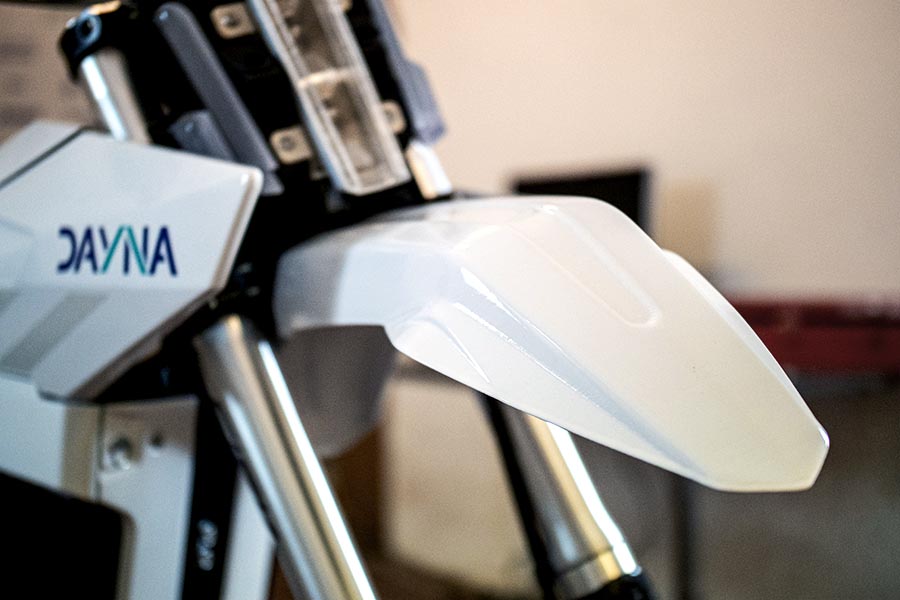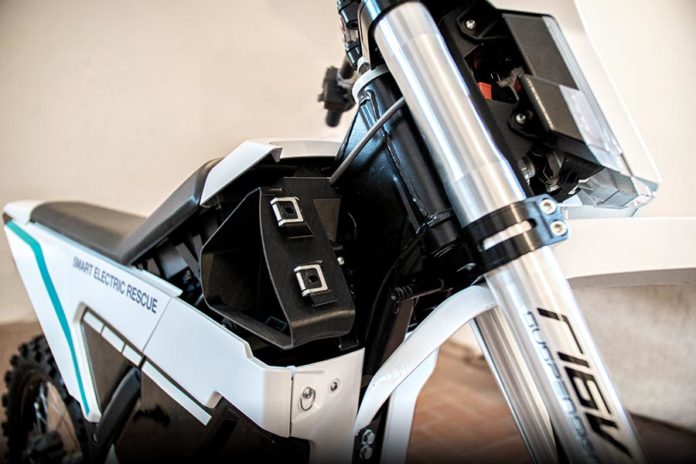The racing team from ELISAVA, Barcelona School of Design & Engineering, has fabricated a fully electric, intelligent motorcycle as part of a multidisciplinary project.
Designed for mountain rescue in hostile terrains, the 100% off-road electric motorcycle has required the combination of Internet Of Things (IoT) technologies, additive manufacturing and sustainable production processes.
Named DAYNA, the electric motorcycle should be able to attend any emergency in a hostile environment, hence the need of parts that deliver strength, speed, resistance and reliability, all of which can be enhanced through AM.
As part of the manufacturing process, the team collaborates with Spanish 3D printers’ manufacturer BCN3D, for the manufacturing of 19 end-use parts using very technical parts.The team at BCN3D also provided some key insights into the ideal optimization of the design and components according to their orientation and materials.
“For the motorcycle components in contact with batteries or electronics, ABS was implemented for its structural resistance, thermal resistance, and low static charge. PA worked well as the material for parts whose resistance to friction and wear were essential.
In order to fulfill the requirements of the most mechanically demanding components, composite materials with a percentage of fiber charge (especially PAHT CF15) were utilized. The use of PPGF GF30 was employed for the manufacturing of the fender; one of the pieces most prone to breaking from shocks and frictions. The material, capable of withstanding such movements, is also beneficial because it is lighter than PAHT and the fender is the largest piece.
The exceptional properties of these materials merged with the enhancement of resistance to shear forces in printing means that the components have triumphed amid the high structural expectations”, BCN3D explains.
The team used the recently unveiled FDM 3D printer Epsilon W50 to manufacture the parts. The 3D printer easily created large parts such as the fender and the fork cover. Thanks to the Mirror Mode, the printer can simultaneously produce mirrored designs symmetrically. BVOH helped provide better quality and fast iteration, in turn making it cost effective while the post-processing stage required the parts to be sanded down to deliver a smooth finish.

The racing team from ELISAVA will take part in the Barcelona Smart Moto Challenge, a contest where engineering students from around the world compete to develop the best electric motorcycle on the market. Not only will they demonstrate their efforts, they will also seize this opportunity to express ideas for the future – one of them being to commercialize this product.
Remember, you can post free of charge job opportunities in the AM Industry on 3D ADEPT Media or look for a job via our job board. Make sure to follow us on our social networks and subscribe to our weekly newsletter : Facebook, Twitter, LinkedIn & Instagram ! If you want to be featured in the next issue of our digital magazine or if you hear a story that needs to be heard, make sure to send it to contact@3dadept.com






